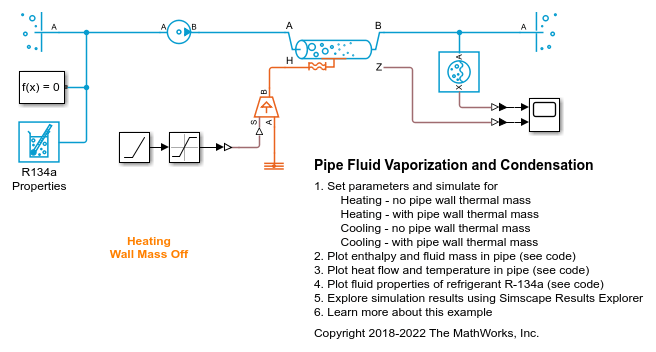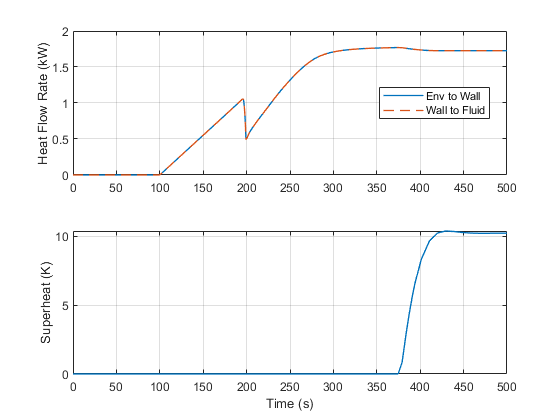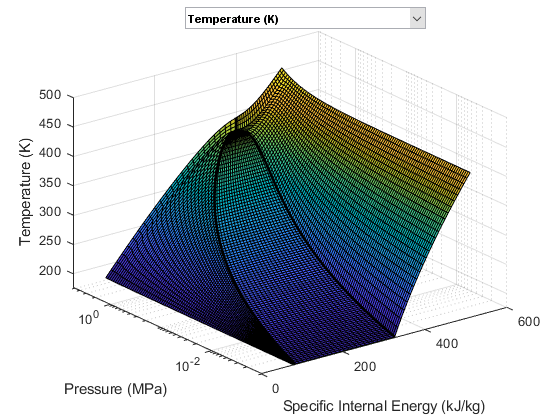Pipe Fluid Vaporization and Condensation
This example shows the 3-Zone Pipe (2P) block used to model vaporization or condensation of fluid flow in a pipe. The block divides the internal fluid volume into up to three zones: liquid zone, mixture zone, and vapor zone, depending on the state of the fluid along the pipe. As fluid flows through the pipe, heat is transferred between the environment external to the pipe and the fluid inside the pipe, causing it to change from liquid to mixture to vapor for the heating case or from vapor to mixture to liquid for the cooling case. The effect of thermal storage in the pipe wall can be optionally turned on by specifying a nonzero pipe wall thickness.
Model

Simulation Results from Scopes

Simulation Results from Simscape Logging
This plot shows specific enthalpy at the beginning and at the end of the pipe. The appearance and disappearance of the liquid, mixture, and vapor zones occurs when the specific enthalpies cross a saturation boundary. The plot also shows the amount of fluid mass within each zone.

This plot shows the rate of heat transfer, which consists of the heat flow rate from the external environment to the pipe wall and the heat flow rate from the pipe wall to the fluid. When the pipe wall thermal mass is omitted, the two heat flow rates are equal. When there is nonzero pipe wall thermal mass, the two heat flow rates are not equal until steady-state is reached due to thermal storage in the segment of the pipe wall over each zone. The plot also shows the amount of superheat in the outflow for the heating case or the amount of subcooling in the outflow for the cooling case.

Fluid Properties


